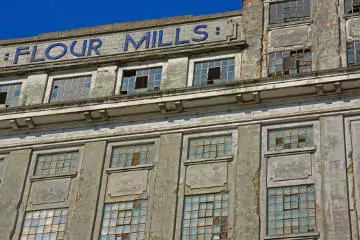WHAT IS A SCHEDULE OF CONDITION?
A Schedule of Condition is a detailed recording of a property’s condition which is usually retained to use at a future time to establish the previous condition of the premises. The survey is typically included within a Lease to limit Tenant’s repairing obligations to the condition of the property at Lease commencement.
A Schedule of Condition survey is sometimes prepared in a simple format, relying predominately on photographs and is known as a Photographic Schedule of Condition. This can be a cost effective way to produce a Schedule of Condition although they do have limitations in that they only rely on the visual image shown in each photograph. Unless carefully worded to include the areas not shown in the photograph, liability may not be limited and the photograph would not document issues such as movement, dampness, leaks, crack width or the extent of specific defects.
To fully record the condition of a building a text and photographic Schedule of Condition is recommended, also known as a Full Schedule of Condition. This would typically include a general description of a property, a detailed tabular schedule which would document the form of construction and condition of each building element, supported by a photographic record to give evidence.
To fully record all aspects of the property we sometimes prepare a video of the premises or include certain video elements of certain defects, for example to illustrate loose fixings, a dripping pipe or loose cladding. Specialist information can also be included in a schedule to fully record a buildings condition, for example a CCTV Survey of the underground drains, an electrical test report of the electrical system, an engineer’s report on the lifts etc.
HOW WOULD A ROOF BE INSPECTED?
Traditionally we would hire a mobile elevated work platform (MEWP) to inspect the roofs and upper elevations, sometimes known as a cherry picker. These allow detailed access to roof areas including a high-level view down onto roofs and a close up of specific issues. Where there is limited access we also utilise a combination of drone photography and elevational pole photography to gain close up views of a property. We consider it is essential to view a roof at close hand as roofs are often one of the main liabilities under a Lease.
WHEN ELSE IS A SCHEDULE OF CONDITION NEEDED?
In addition to inclusion within a Lease, we also prepare Schedules of Condition for a variety of purposes, for example inclusion into a Party Wall Award to clearly document the condition of a neighbouring property before works progress.
WHAT IS A CONDITION SURVEY?
There is often confusion between a Schedule of Condition and a Condition Survey. The main differences are that a Schedule of Condition is purely a record of the condition of the building to be appended to an Agreement whilst a Condition Survey is prepared to not only show the condition of the building but identify works required, usually with costs to assist in planning maintenance works which may be needed. There is also sometimes confusion between a Schedule of Dilapidations and a Schedule of Condition, a Schedule of Dilapidations is something prepared during or at the end of the Lease to show the breaches in a Lease Agreement.
DOES A SCHEDULE OF CONDITION AVOID FUTURE LEASE LIABILITY?
Unless a Lease is very carefully worded and there is a comprehensive Schedule of Condition appended, then a Tenant’s Liability is unlikely to be fully limited by appending a Schedule of Condition. People often assume that as the building further deteriorates they would not be liable for such further deterioration. As it is very difficult to put an element back into a partly repaired state, there has been much debate in many Dilapidation cases law over a Tenant’s obligation to then put the element back into full repair. Similarly, it is difficult to record every single part of a building in a schedule and unless a photograph is agreed to be illustrative of all areas then areas not shown in a photograph or referenced in the text could carry a liability. It is therefore important to carefully word the repairing covenant with the Lease to agree the standard of repair agreed by both Landlord and Tenant, and establish who is responsible for any further deterioration which occurs after Lease commencement.

IS A SCHEDULE OF CONDITION ONLY PART OF THE EVIDENCE?
There is often debate over whether a Schedule of Condition is the only limitation on the extent of repair. This is dependent upon the exact wording of the Lease and it is important to check whether the standard of repair is limited to ‘the standard on Lease commencement, as further evidenced by a Schedule of Condition’ or whether the standard of repair is limited ‘to the Schedule of Condition’. Although similar in wording, there can be a difference and in some cases the intention may have only been to incorporate a Schedule to limit a certain defect, eg an uneven floor or an out of line wall. It is therefore important to carefully read the wording of each Lease.
DOES THE SCHEDULE HAVE TO BE IN THE LEASE?
It is important to ensure the Schedule of Condition is referenced in the legal agreement and not simply held on file. It is often thought that by simply having some photographs on file these can be used to reduce a Tenant’s liability under the term. If they are not specifically referenced in the Lease and the Lease is held on standard full repairing terms, then it is unlikely they would limit a Tenant’s obligation and the Tenant could be liable for putting the property into repair, even if it was clearly in disrepair at the start of the Lease. This is why it is important to obtain specialist advice from a Chartered Building Surveyor when taking any Lease and even if on the face of it, it seems a fairly straight forward process to take a few photographs, our knowledge of the potential claim at the end of a Lease will help reduce your liability.
SALE AND LEASE BACK AGREEMENTS
We regularly act for a variety of clients who are undertaking a sale-and-leaseback arrangement of their portfolio to release the equity in their business. This is sometimes undertaken when the freehold premises are sold to an investor, and in some cases an operational company may be disposed of and the vendor may retain the freehold as an investment. In these cases, there is often a requirement to undertake numerous surveys and prepare Schedules of Condition within a tight time frame and to include other elements of due diligence to ensure the overall business transaction is not delayed.
WHAT DOES A SCHEDULE OF CONDITION SURVEY INCLUDE?
Our expert RICS surveyors will conduct a thorough inspection of the interior and exterior of the property to identify any defects, damage, or disrepair. There will be detailed written descriptions of the property’s condition outlined in a Full Schedule of Condition along with photographic evidence of:
- All floors, walls, ceilings, and doors
- Kitchen units and appliances
- Bathroom suites and fittings
- Internal and external decoration
- Gardens and external areas
- Any garages, outbuildings, or parking spaces
Our schedule will also highlight areas of wear and tear commensurate with age and type of occupancy. When stipulated, our RICS surveyors will also prepare video footage as evidence of any deterioration or additional defects that have arisen during a tenancy period. Some clients also opt for supplementary sections tailored to their requirements, such as detailing furnishings or taking meter readings. All of Bradley Mason LLP’s Schedule of Condition services are conducted in strict adherence to RICS guidelines to provide clients with a precise record of property condition before residence.
HOW MUCH DOES A SCHEDULE OF CONDITION SURVEY COST?
Costs for a professional Schedule of Condition survey depend on the size, location and facilities of the property being inspected. At Bradley Mason LLP, we offer very competitive rates and will provide an accurate quote after gathering a few details about your specific property. There are no hidden costs and all photographic or video evidence needed will be included as part of your initial quote. We are fully transparent about the costs payable by you and strive to provide excellent value tailored to each client’s needs. Reduced rates may also be negotiated for multiple property instructions or portfolios.
Some key factors affecting survey costs include:
- Size of the property
- Number of rooms, floors and external areas needing inspection
- Additional structures like annexes, garages, or swimming pools
- Location and ease of access to the property
- The extent of furnishings requiring validation
- Any extra services desired such as floor plans or inventory
Please get in touch to discuss your specific requirements. We’ll quickly provide a customised quote so you know exactly what our Schedule of Condition surveys will cost for your property.
ARE SCHEDULES OF CONDITION LEGALLY BINDING DOCUMENTS?
A Schedule of Condition report prepared by a RICS accredited surveyor like Bradley Mason LLP can be considered a legally binding document. It provides an impartial, expert record of the state and condition of a property at a fixed point in time. The level of detail and supporting photographic evidence within our schedules gives them strong legal standing. They can be used as proof in disputes between landlords and tenants regarding any alleged damage or deterioration during a tenancy, or lease breaches which lead to a Schedule of Dilapidations. Courts can treat schedules of condition as binding contracts between parties if they have been properly prepared, agreed to and signed. Our comprehensive reporting and certification give clients confidence that the schedule will withstand legal scrutiny.
HOW LONG IS A SCHEDULE OF CONDITION VALID?
There is no set expiry date for a Schedule of Condition, as it remains an accurate record of the property’s state at the date of inspection. However, the value and relevance of the schedule will diminish over time as the property naturally deteriorates with repeated use and ageing. For rental properties, we recommend that landlords update the Schedule of Condition every 2-3 years. This provides an appropriate benchmark to assess wear versus new damage and is particularly worthwhile for longer tenancies. For untenanted properties, schedules have longer validity, but we’d suggest a fresh inspection every 5 years or so. This checks for any structural issues, ensures records remain up-to-date and reinforces the property owner’s due diligence.
HOW LONG DOES A SCHEDULE OF CONDITION SURVEY TAKE?
The time taken to thoroughly inspect and record the condition of a residential property can vary depending on the size, layout and furnishings involved. Larger or more complex properties with multiple buildings, annexes, landscaped gardens, and outbuildings will understandably take more time than single-floor flats or apartments. The inspection duration also depends on the level of detail required by the client. Our schedules are extremely comprehensive, but we can adapt to suit individual needs. Our surveyors schedule appointment times to ensure they never feel rushed. This ensures the reports are scrupulously prepared with sufficient time allotted to produce the exemplary standard of schedule our clients expect.
A testimonial from one of our Condition Survey clients
“I feel fortunate to have found find Bradley-Mason LLP. I was searching online for a quality but cost effective property partner, with national coverage, and sharing my companies ambition to grow quickly. They have proved over the last twelve months to be a trusted and quality supplier, very responsive to our requirements and that of our clients. They produce high quality reports, efficiently and without fuss and they have always put themselves out when I have needed to change the plan at short notice. I hope you find yourself lucky to have found them too”
Steve Christie – Portman Dental






























































